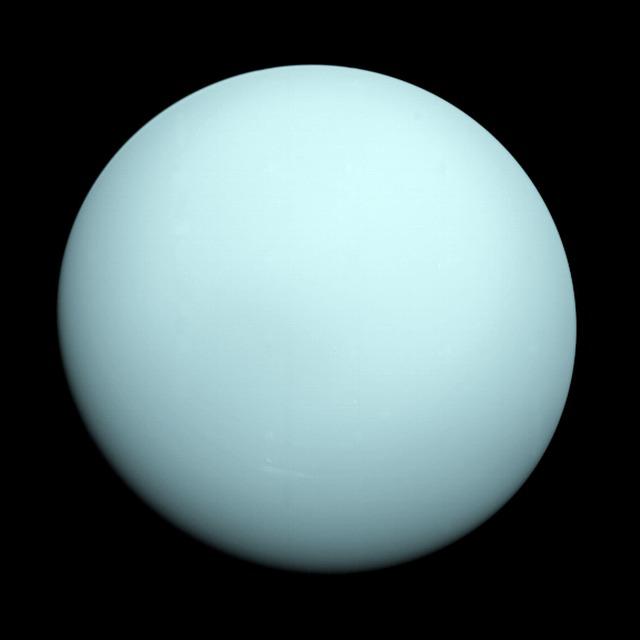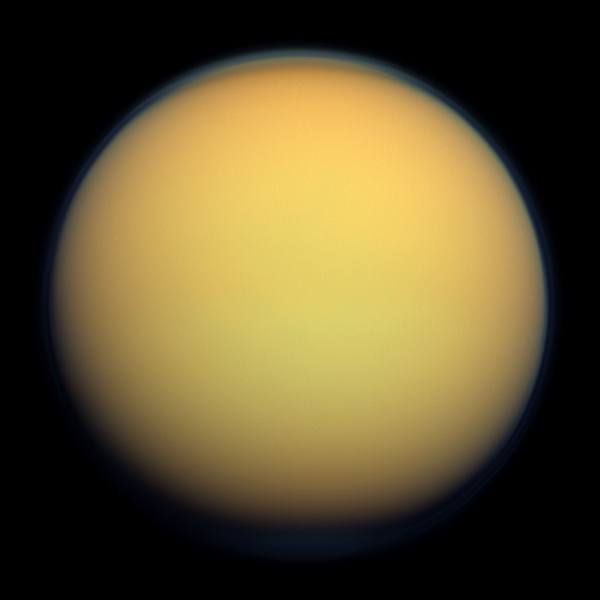*This post may contain affiliate links. This means we may make a commission if you purchase an item using one of our links*
The main differences between Uranus and Titan would be that Uranus is a gas based ice giant that is the 7th farthest planet from the Sun whilst Titan is the 2nd largest moon in our solar system, and joint 6th farthest planet from the Sun, Titan is a terrestrial celestial object that has a water cycle similar to that of Earth whilst Uranus has the most prominent axial tilt of 98° compared to Titan’s 27° axial tilt.
There are numerous differences between the two so continue reading if you want a more detailed look at each entity below along with some of their similarities and differences.
What Is The Planet Uranus?
Table of Contents

Uranus is the 7th farthest planet from the Sun and the 3rd largest planet in our solar system, coming in at a diameter of 50,724 km. This means that roughly 63 Earth’s could fit inside this ice giant.
In regards to why this cyan blue planet is referred to as an ice giant, it’s down to it’s composition. Uranus is made mostly of methane, ammonia and water with its atmosphere mostly consisting of hydrogen and helium, much like the Sun, and the other giant planets in our solar system.
Due to its distance from the Sun, it takes Uranus 84 years to complete one orbit our central star, whereas it’s axial rotation is much faster than even our Earth at 17 hours per rotation.
As a result of its distance from the Sun, ice based composition and faster rotation levels, Uranus is far from an ideal place to live in let alone have the potential to support life.
Its base temperature is generally a chilling -190 to -200 degrees Celsius and its rocky core, although hot, is still on the cooler side for a large planet sitting around the 5,000 degrees Celsius range.
The planet’s winds are also very fast often hitting 900 km/h, which is roughly twice that of Earth’s most powerful turbulent wind speeds.
In regards to the moons surrounding this cyan planet, we’ve discovered 27 small ones orbiting it. Furthermore, it has 13 rings surrounding it which also means Uranus has the most abundant collection of rings surrounding in our solar system, which is even more than Saturn.
One of the Uranus’ most unique features would include the manner in which it rotates around its axis. As opposed to the slightly angled rotation that the likes of Earth, Saturn and most other planets display, Uranus’ axis is positioned at a 98 degree angle.
What this means is this ice giant completes an axial rotation on its side as opposed to the relatively up straight positioning of most of the other planets in our solar system.
What Is The Moon Titan?

Titan is Saturn’s largest moon and the second biggest moon in the entire solar system, with a diameter of 5,150km. This would make it even larger than the planet Mercury which is only 4,879km, and significantly larger than Pluto also.
As a result, Titan’s gravitational strength stands at around 1.352 m/s²
It is the only natural satellite in our solar system that is composed similarly to Earth, where it has a thick atmosphere made primarily of nitrogen (95%) along with smaller amounts of methane (5%). It has rivers and lakes on its surface along with a water cycle very similar to that of Earth, where essentially water evaporates and eventually lands on the satellites surface.
Therefore, much like Earth, Titan has a terrestrial based body but, there is a difference in their atmospheric pressure. The pressure on Titan’s surface is around 60% greater than that of Earth’s surface but, it isn’t nearly as dense.
Nevertheless, it is still far denser than most other bodies at 1.88 g/cm³. As a result, Titan’s mass is 1.345×10^23 kg.
In regards to its temperature, Titan is on the colder side where it averages around -179 degrees Celsius whilst its core’s temperature is actually very cold in comparison to other entities falling between 226 – 526 degrees Celsius.
As Saturn is the 6th farthest planet from the Sun, it will take Titan roughly the same amount of time to orbit the Sun, which would fall around 29.4 years.
It takes Titan 15 days and 22 hours to orbit Saturn. A day is 15 days and 22 hours also as it is tidally locked to the gas giant.
Similarities Between Uranus And Titan
There are a few similarities that Uranus and Titan share, which in this case includes the following:
- Both are a spherical shape.
- Both have a hotter core.
- Both are part of the same solar system.
- Neither have tectonic plates.
- Both orbit another object.
Differences Between Uranus And Titan
In regards to the differences between the two, they include the following:
- Uranus is bigger with a diameter of 50,724km whilst Uranus has a diameter of 5,150km.
- Titan is a terrestrial based natural satellite whilst Uranus is a gas based ice giant.
- Titan has an axial tilt of 27 degrees whilst Uranus has an axial tilt of 98 degrees.
- Uranus has 27 other moons orbiting it whilst Titan has 0.
- Titan has a water cycle similar to that of Earth with lakes and rivers present on its surface whilst Uranus is an ice giant with with elements of water closer to its core but not as easily as distinguishable a water cycle as Titan’s.
- Uranus has 14 rings surrounding it whereas Titan has 0.
- Titan’s average temperature is -179 degrees Celsius whilst Uranus’ temperature is -190 to -200 degrees Celsius
- Uranus’ core is far hotter than Titan’s where it is 5,000 degrees Celsius as opposed to Titan’s 226 – 526 degrees Celsius.
- Titan completes a day in 15 days and 22 hours whilst a Uranus day is 17 hours.
- In regards to how long it takes them to orbit the Sun, it’s 29.4 years for Titan and 84 years for Uranus.
- Uranus has a gravitational strength of 8.87 m/s² as opposed Titan’s much weaker 1.352 m/s².
- Titan has a density of 1.88 g/cm³ compared to Uranus’ that is 1.27 g/cm³.
- Uranus is the heavier of the two with a mass of 8.681 × 10^25 kg whereas Titan’s mass is 1.345×10^23 kg.
- Titan is tidally locked to Saturn whilst Uranus is not tidally locked to anything.
- Uranus orbits the Sun in a relatively circular pattern whilst Titan orbits Saturn elliptically.
Summary
Even if Titan and Uranus are celestial objects within the same solar system, and have a similar spherical shape, the two are worlds apart when it comes to how they function.
Whether it be in regards to their size, temperature, density, mass and their physical composition, the two are designed to function very distinctly from one another after all Titan is simply one of Saturn’s many moons whilst Uranus is one of only 8 officially recognized planets that orbits the Sun.

